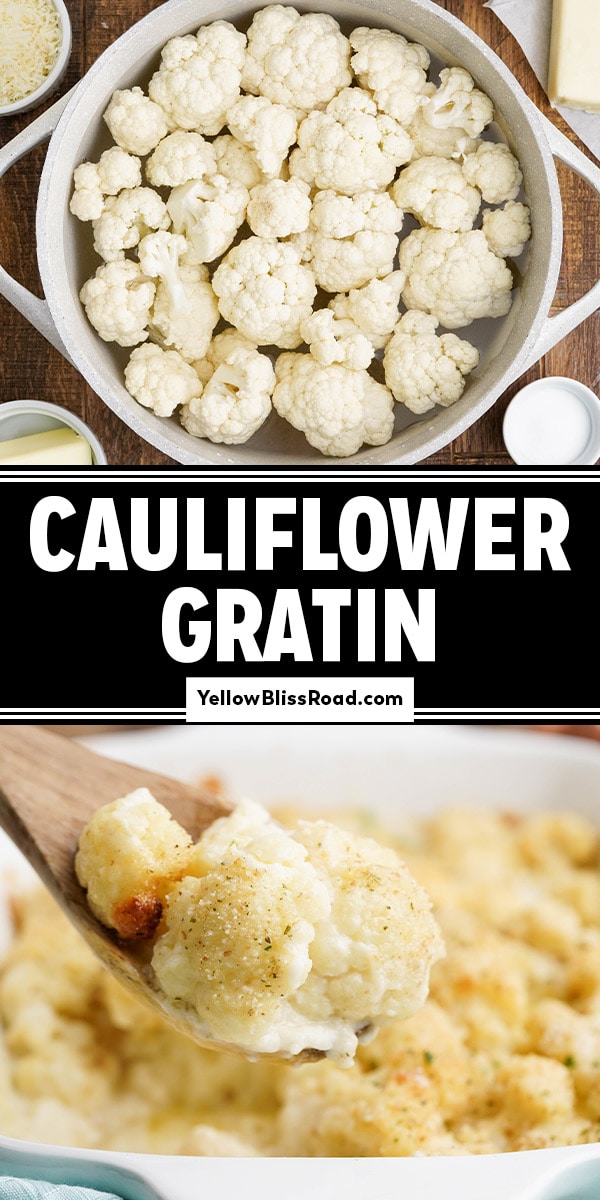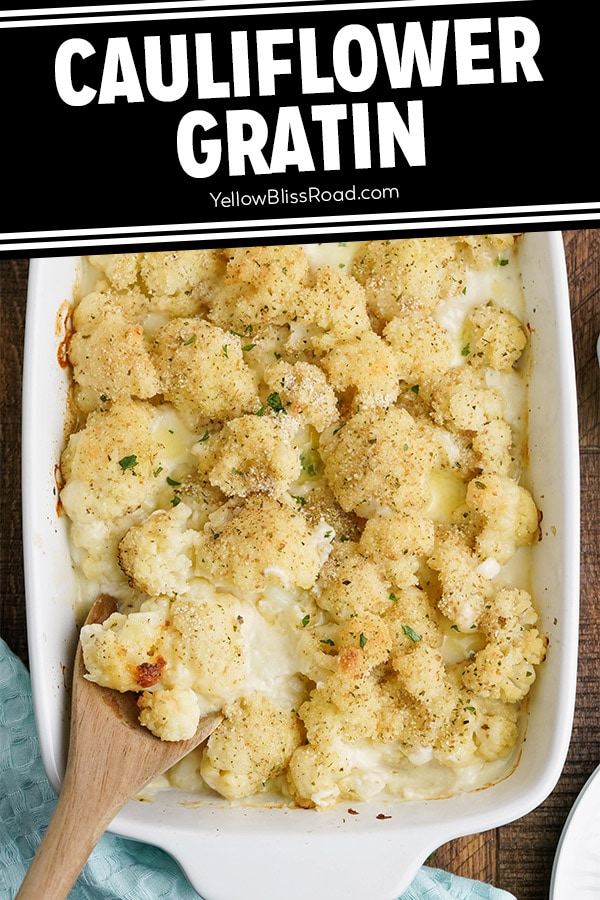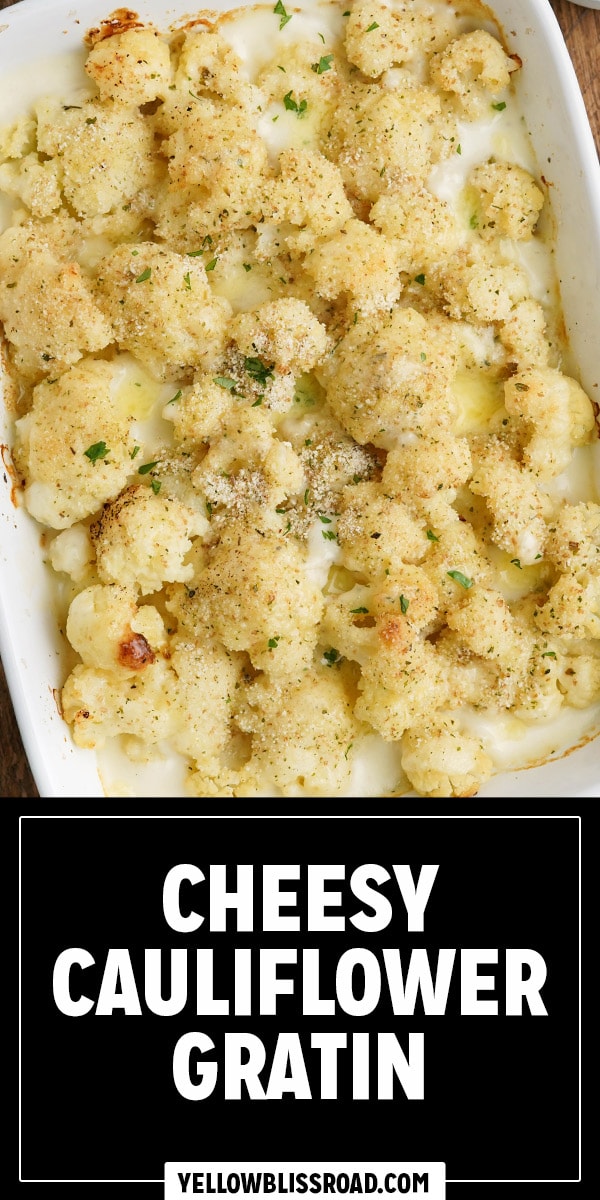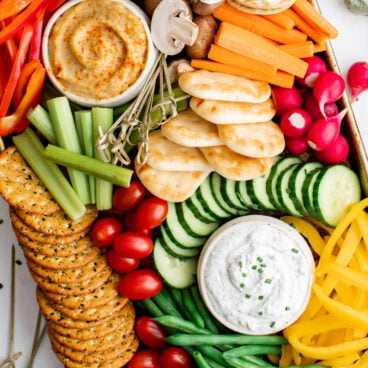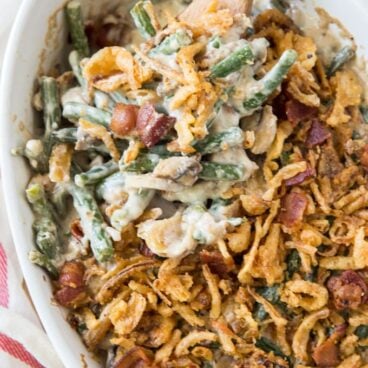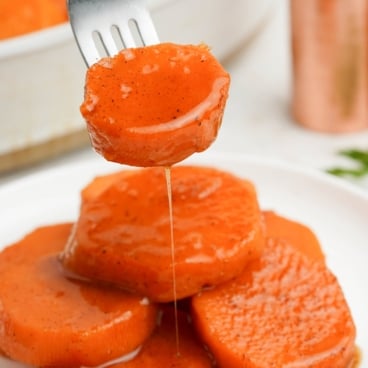This post may contain affiliate links. Please read our disclosure policy.
Cauliflower Gratin is a cheesy casserole that is similar to potatoes au gratin but made with cauliflower! It’s a great way to add more veggies to a meal. The cheese sauce and crispy breadcrumb topping can’t be beat!
Add this Cauliflower gratin recipe to your weekday dinner menu, paired with Roasted Spatchcock Chicken or Herb Roasted Pork Tenderloin. But it’s also impressive enough to serve at the holidays with your Thanksgiving turkey or glazed ham.
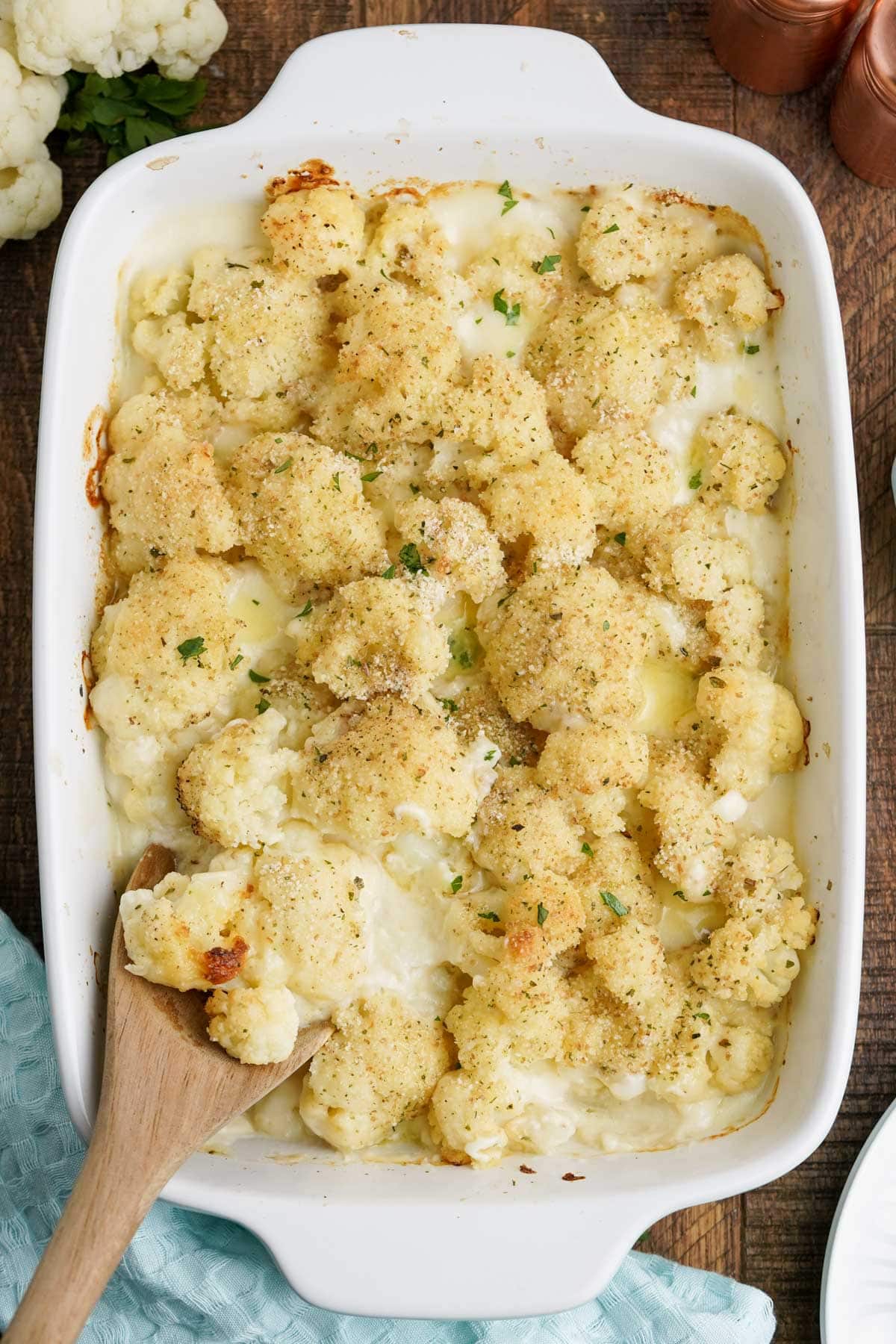
Why We Love This Recipe
- Cheesy Vegetable Dish – One of the best ways to get a cauliflower skeptic to love the vegetable is by adding cheese!
- Versatile – This classic side is great served with many mains.
- Easy to Make – You’ll be surprised at how easy it is to make this impressive side dish.
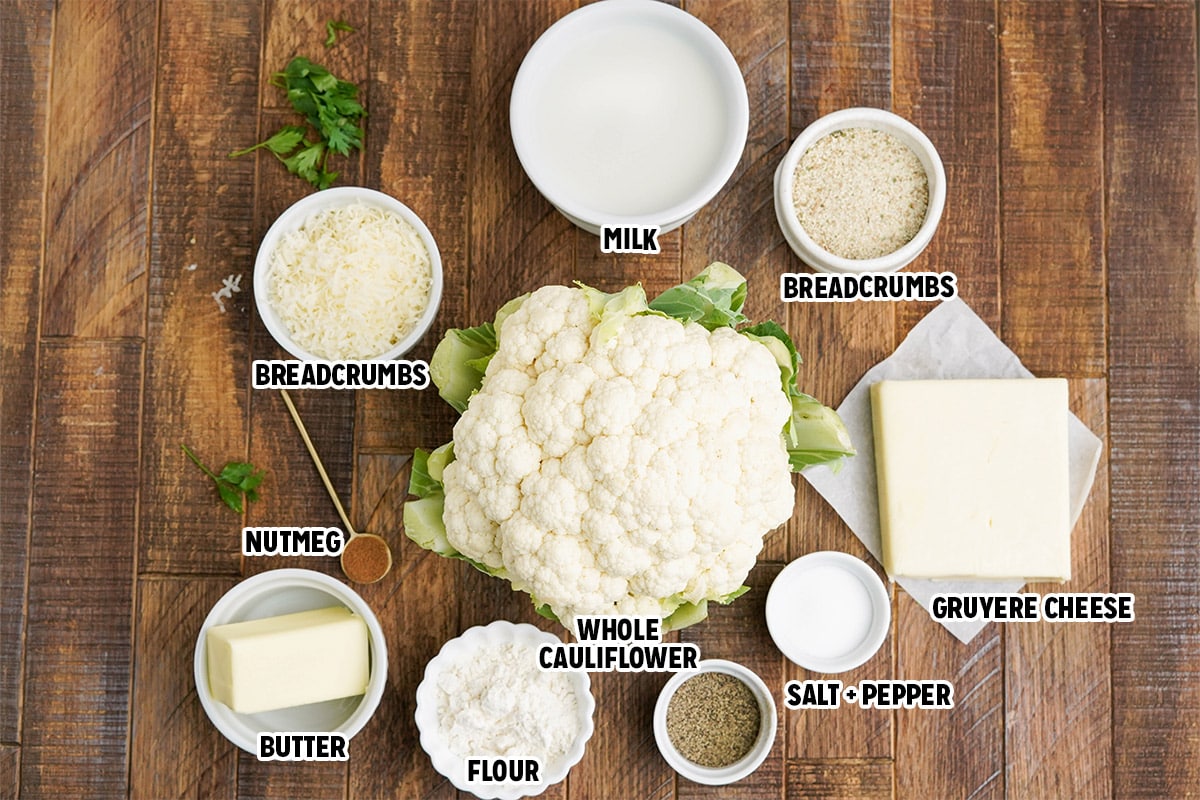
Ingredients For Cauliflower Gratin
- Head of Cauliflower – I prefer to use fresh cauliflower, but you can use frozen cauliflower (make sure to well drain off the excess water).
- Spices – Salt, Black Pepper, Ground Nutmeg
- Butter – I prefer to use unsalted butter to easily control the salt added
- All-Purpose Flour
- Whole Milk
- Cheese – Freshly grated Gruyere Cheese and Parmesan Cheese
- Italian Seasoned Breadcrumbs
- Chopped Fresh Parsley
How To Make Cauliflower Au Gratin
See the recipe card below for full, detailed instructions
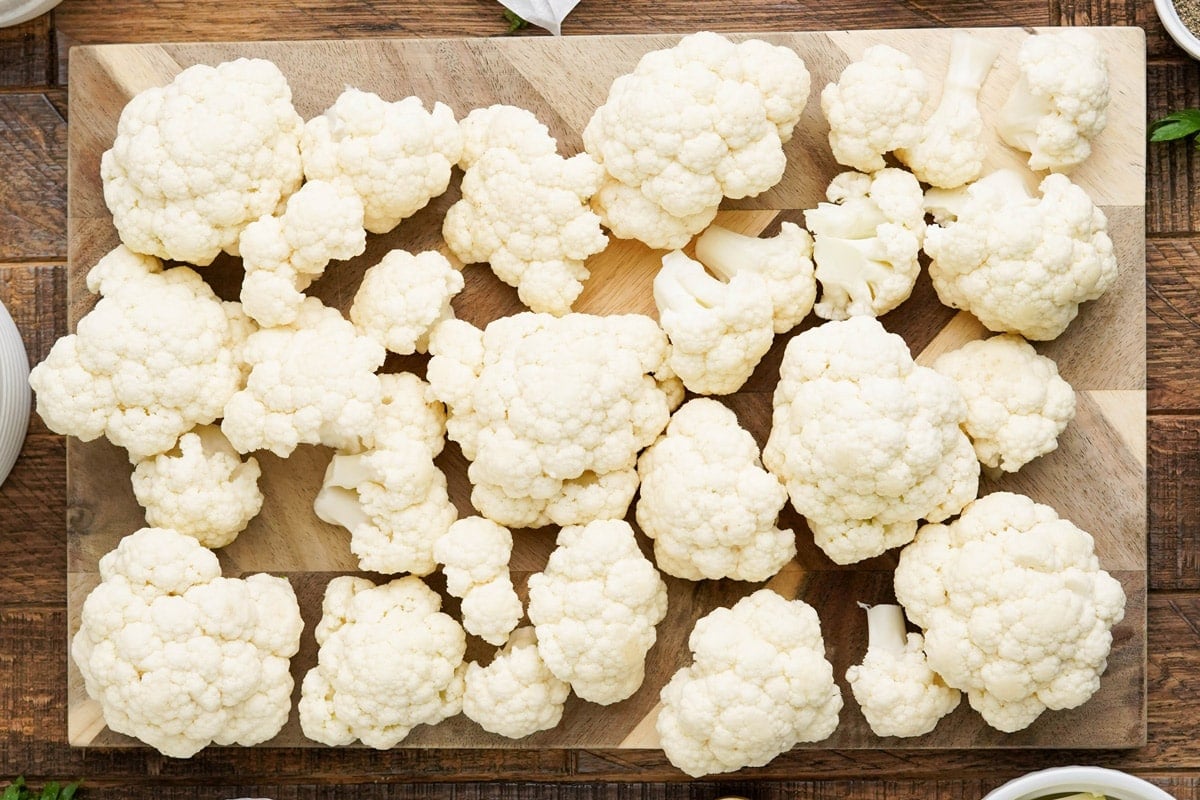
Step 1: Chop up the cauliflower into bite-sized pieces and boil until fork tender. Drain well and set aside.
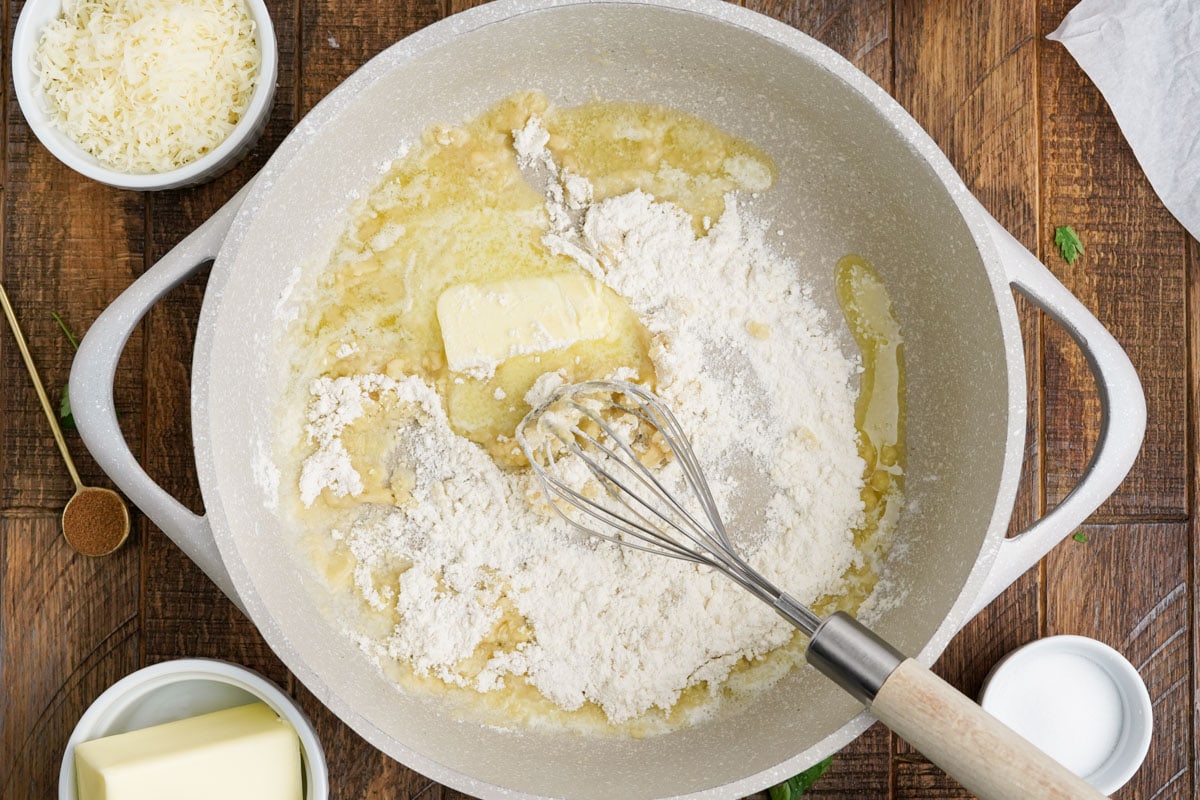
Step 2: Make the Bechamel Sauce. Start the cheese sauce by melting the butter in a medium pot then add the flour and spices, whisking together while cooking for a minute. Slowly whisk in the milk so the flour gets fully incorporated before adding more milk.
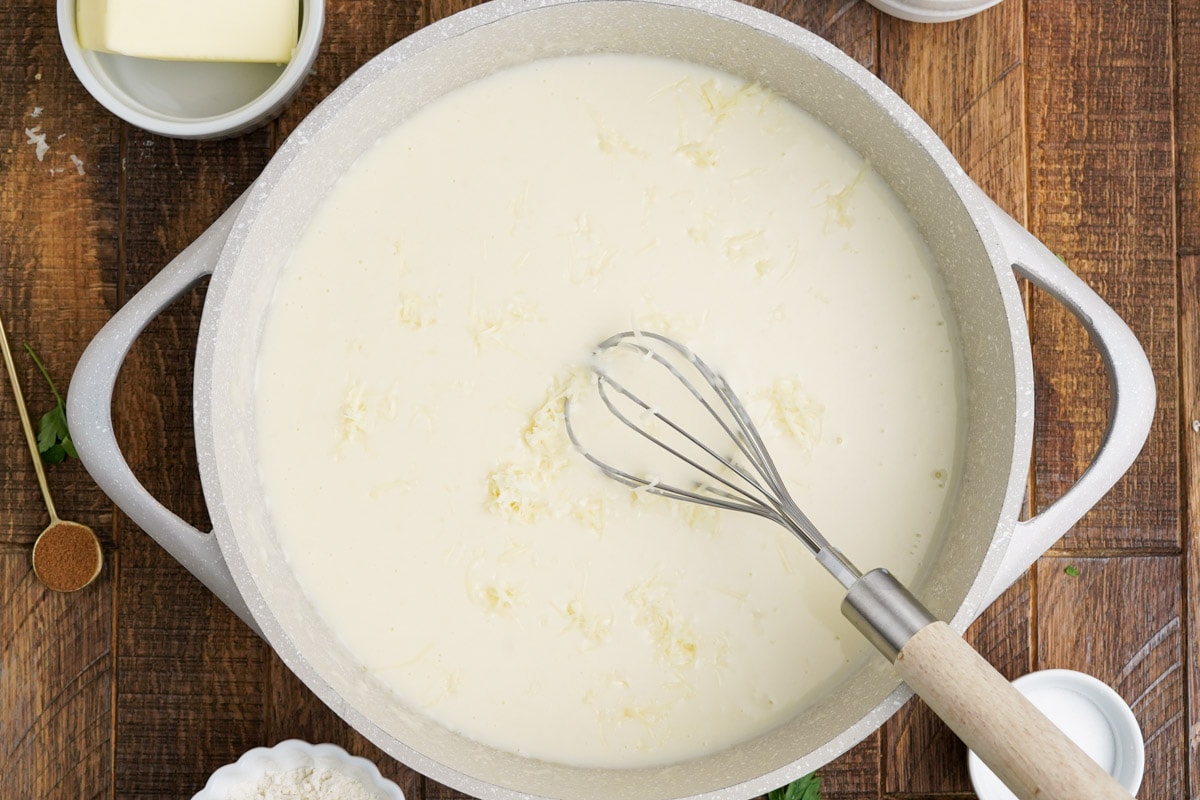
Step 3: Remove the bechamel sauce from the heat and stir in the cheeses until smooth.
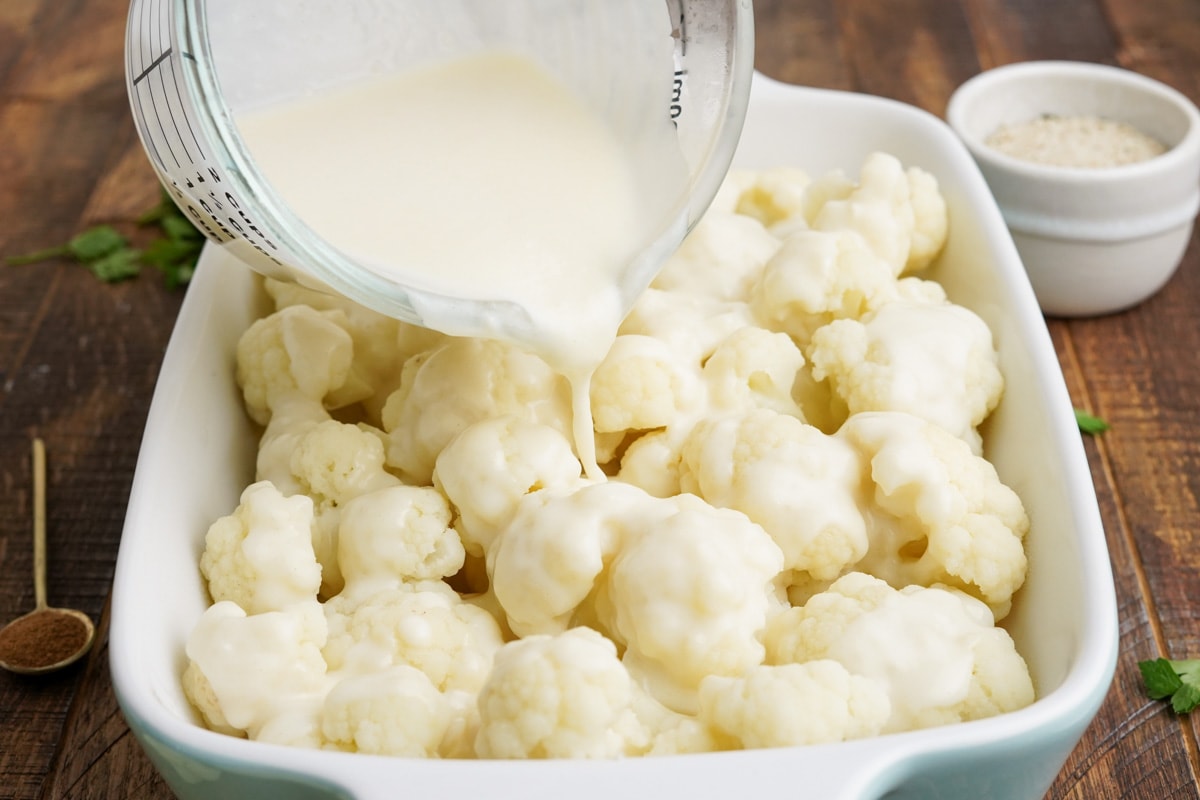
Step 4: Spread a thin layer of the cheese sauce on the bottom of the baking dish then top with the cauliflower. Pour the rest of the cheese sauce over the cauliflower.
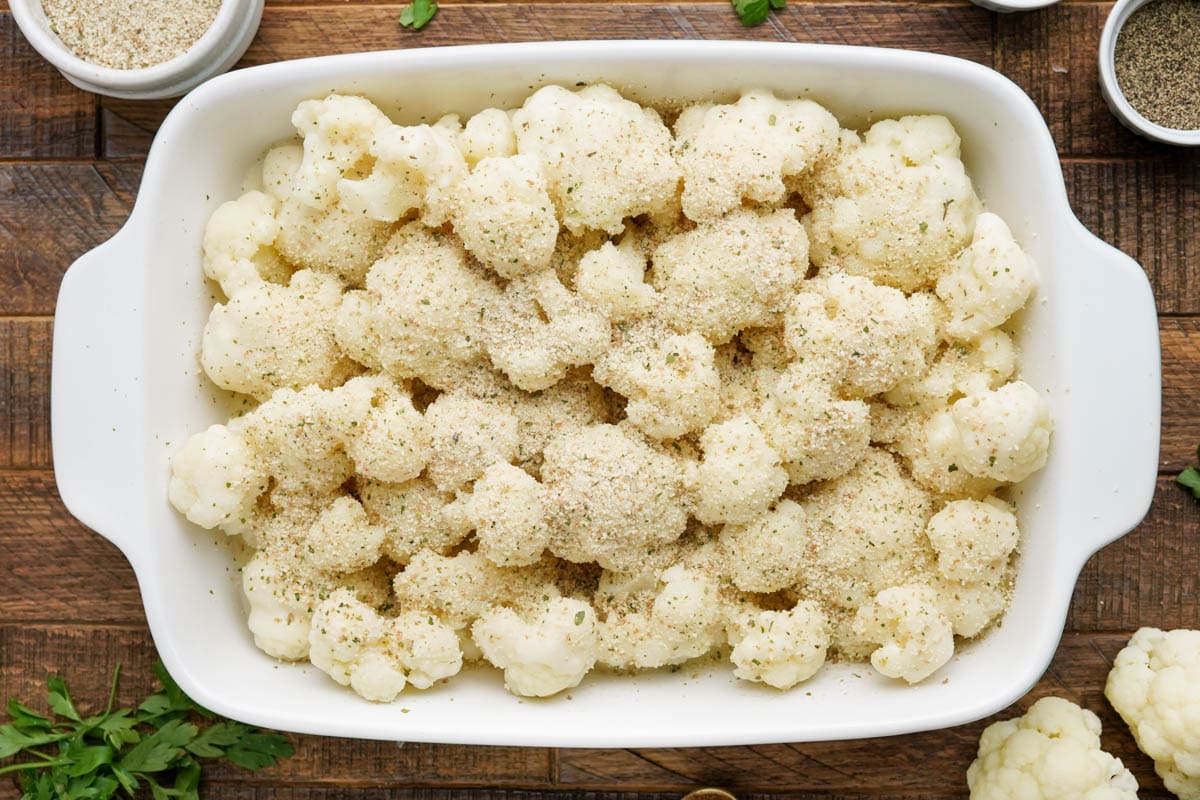
Step 5: Sprinkle breadcrumbs all over the top of the cauliflower.
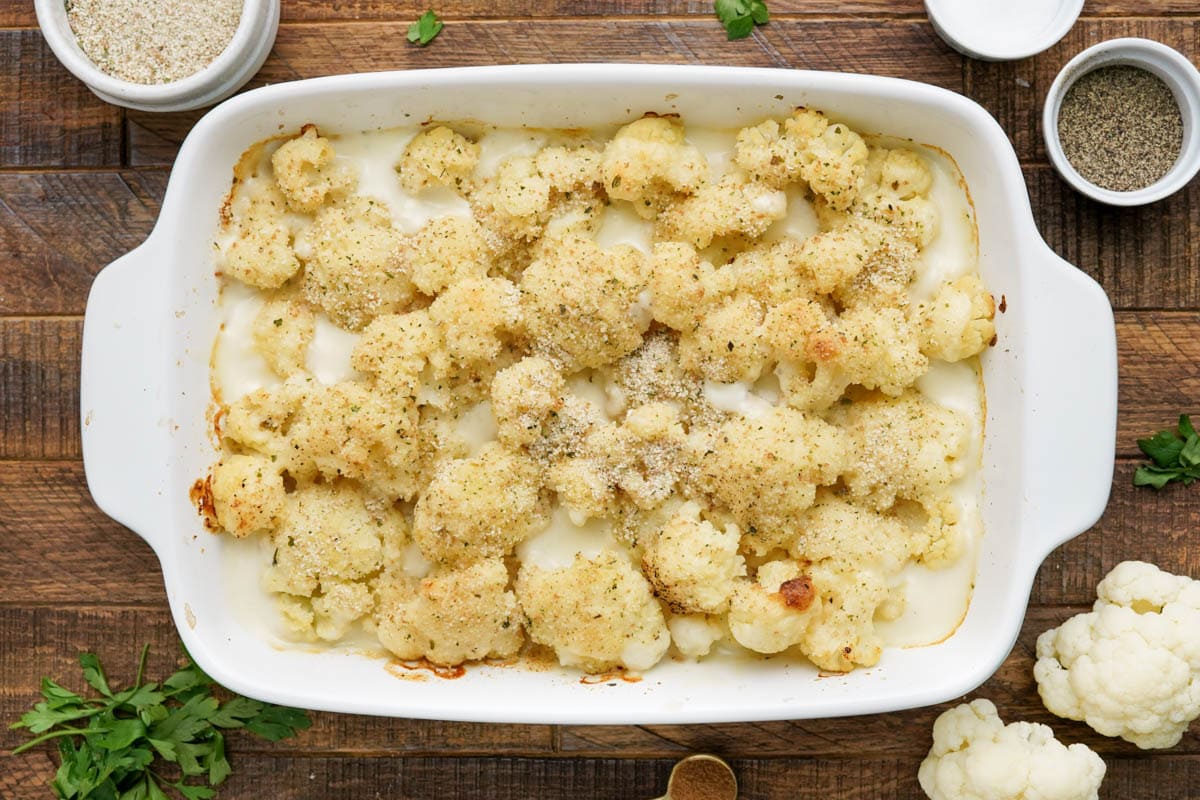
Step 6: Bake the cauliflower au gratin until golden brown. Sprinkle with the parsley and serve.
Recipe FAQs
If your cauliflower gratin is watery, a couple of things could have happened – either the cauliflower was overcooked, or not fully drained. To make sure this doesn’t happen:
1. Make sure you don’t overcook your cauliflower when boiling it. The florets should still have some firmness.
2. Make sure you fully drain off the water after cooking the florets.
Au Gratin is a French cooking method where a baked dish is covered with breadcrumbs and sometimes cheese. Potatoes au gratin is a well known dish using this technique.
Gruyere and parmesan cheese are the most popular cheeses to use, but you can use other shredded cheese like mozzarella or white cheddar.
Instead of boiling the cauliflower florets, you can also roast them in a 400 degrees F oven for 15-20 minutes until fork tender.
Leftovers can be stored in an airtight container in the fridge for up to 4 days. Reheat the leftovers in a 350 degrees F oven until warm. Because of the cheese sauce, I recommend using caution when reheating in the microwave as the sauce tends to break.
Helpful Tips
- Drain Cauliflower Well – Make sure to drain the cauliflower well after boiling so no excess water goes into the gratin.
- Salt the Water – Salting the water before boiling the cauliflower helps add flavor!
- Add Milk Slowly to Sauce – When making a bechamel sauce, it’s really important to gradually add the milk so that the flour can become absorbed. Otherwise you can end up with a lumpy sauce.
- Shred the Cheese Yourself – It’s best to shred the cheese yourself vs buying pre-shredded cheese. Pre-shredded cheese does not melt as smoothly.
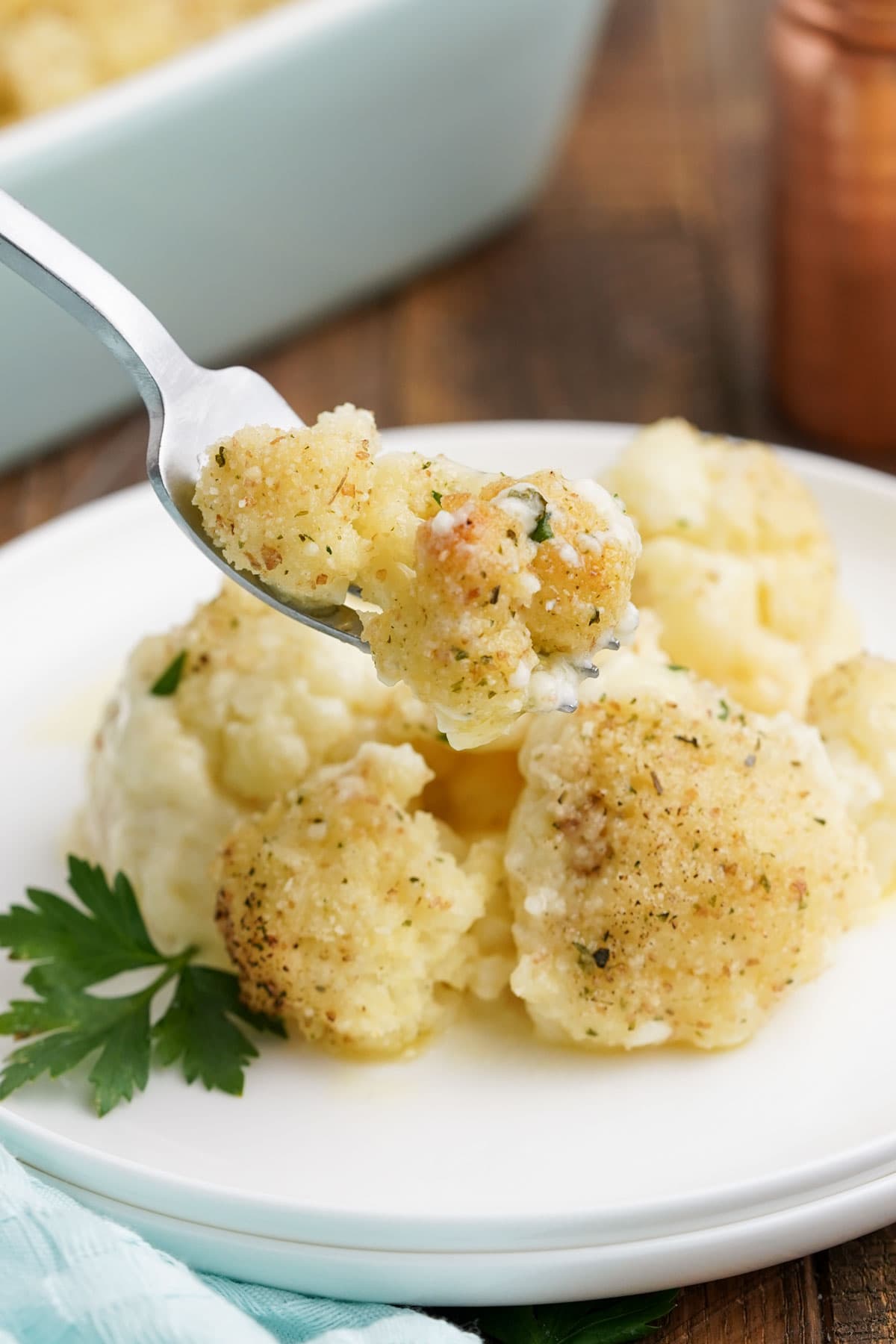
More Veggie Side Dishes
- Easy Oven Roasted Vegetables
- Steakhouse Salad
- Candied Yams
- Roasted Brussels Sprouts
- Southern Green Beans
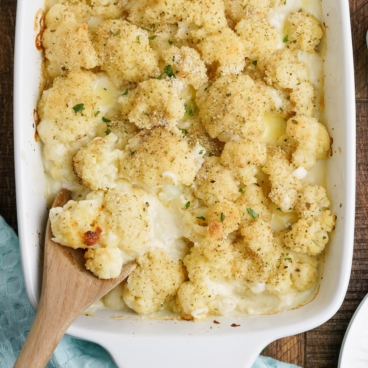
Cauliflower Gratin Recipe
Ingredients
- 1 3 pound head of cauliflower about 6-8 cups, chopped
- 1 teaspoon salt to season water
- 3 tablespoons unsalted butter
- 3 tablespoons all-purpose flour
- 2 cups whole milk warmed
- 1 teaspoon salt
- ½ teaspoon ground black pepper
- ¼ teaspoon ground nutmeg
- 1 cup freshly grated Gruyere cheese
- ½ cup freshly grated Parmesan cheese
- ¼ cup Italian seasoned bread crumbs
- Optional: Chopped fresh parsley for garnish
Instructions
- Preheat the oven to 375 degrees and prepare a 9×13 baking dish with cooking spray. Set aside.
- Bring a large pot of water to a boil and add 1 teaspoon of salt to season.
- Chop the cauliflower into bite sized pieces and boil in prepared water for 5-10 minutes or until fork tender. Drain thoroughly and set aside.
- In a medium sized saucepan, melt the butter over medium heat.
- Add flour, salt, pepper and nutmeg and whisk together, cooking for one minute.
- Slowly pour in milk, ½ cup at a time, whisking constantly until the flour is fully dissolved. Allow the mixture to steam and simmer before adding each additional ½ cup of milk. Repeat this process until all 2 cups of milk are added, whisking constantly.
- Remove from heat and add in the Gruyere and Parmesan cheese, stirring constantly until smooth.
- Spread a thin layer of the cheese sauce on the bottom of the prepared baking dish.
- Place the cauliflower in the baking dish and top with the remaining cheese sauce.
- Top with the bread crumbs.
- Bake for 25-30 minutes or until golden brown.
- Garnish with fresh parsley and serve.
Notes
- Leftovers can be stored in an airtight container in the fridge for up to 4 days. Reheat the leftovers in a 350 degrees F oven until warm. If microwaving, do so gently as the sauce may break.
- Make sure to drain the cauliflower really well; excess water can make the sauce thin.
- Be very careful not to overcook the cauliflower. You want it to be tender but still have a bite to it. It will continue to cook a bit more in the oven.
Nutrition
Nutritional Disclaimer Kristin Maxwell of “Yellow Bliss Road” is not a dietician or nutritionist, and any nutritional information shared is an estimate. For accurate calorie counts and other nutritional values, we recommend running the ingredients through your preferred online nutritional calculator. Calories and other nutritional values can vary depending on which brands were used.
